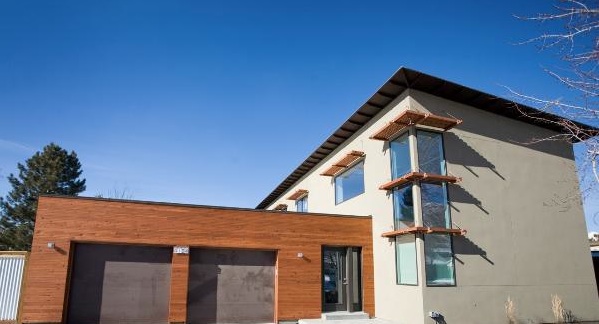
Image Credit: Brach Design
Image Credit: Brach Design The 3,000-sq.-ft. home’s owners began working on the design of the house with Salt Lake City-based architect David Brach in December 2007. Construction began in April 2009. The owners moved in in early December. Construction costs came to about $175 per square foot. The home’s owners, Joe Turner and Rebecca Guymon, say they’re pleased with its energy efficiency but also the interior quiet that Passive Houses construction delivers.
By early December, when they finally moved into their newly built house, Joe Turner and his partner, Rebecca Guymon, had borne witness to many of the construction refinements that went into making the building worthy of certification by Passive House Institute U.S.
The couple told USA Today Green House blogger Wendy Koch that they had rented a basement apartment a few blocks away and strolled by the site daily to watch the project’s progress, from demolition, which began a year ago this month, to move-in condition. It was, in other words, a purgatory of excitement and impatience, peppered with the occasional frenzy over interior design issues.
Located in Millcreek Township, in Salt Lake County, Utah, the 3,000-sq.-ft. house, with a 2.2 kW solar power system, ended up costing about $175 per square foot, or about 16% more than a comparable house built to code, Turner said. The project architect, David Brach of Salt Lake City-based Brach Design, estimates that the renewable-energy systems, which also include solar hot water, will cover 75% of the home’s annual energy needs, based on two-person occupancy. (See Dave Brach’s note below regarding costs and the energy-consumption estimate, which we’ve updated in the text.)
Temperature stability, noise reduction
The home’s insulation and airtightness, and its accompanying HVAC system, were put to the test the week the couple moved in, when nighttime temperatures took subzero dives. In a blog about the project, Turner and Guymon, noted that the house handled the cold with no trouble and delivered a bonus that is sometimes overlooked until such houses are occupied: quiet.
“Our concrete floors are not cold to the touch you can walk on them comfortably,” Turner wrote. “The same goes with the tile in the bathroom. The window frames are also surprisingly warm to the touch. The passive house design seems to be living up to the hype so far. All parts of the inside of the home are comfortable.
“Dave’s design of south-facing windows has also really proven to be very effective. We can leave the lights off completely during the day even in overcast weather. In fact I’m typing this right now with just the outside light.”
Weekly Newsletter
Get building science and energy efficiency advice, plus special offers, in your inbox.





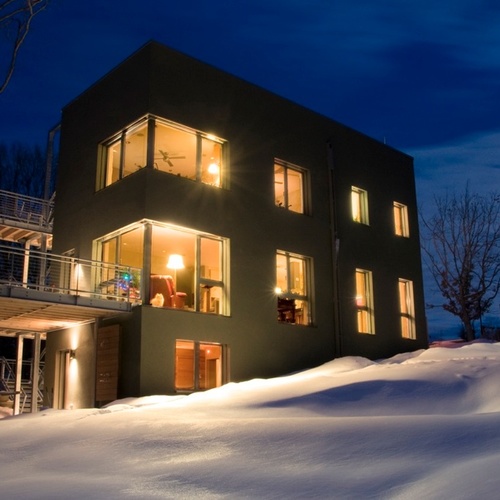
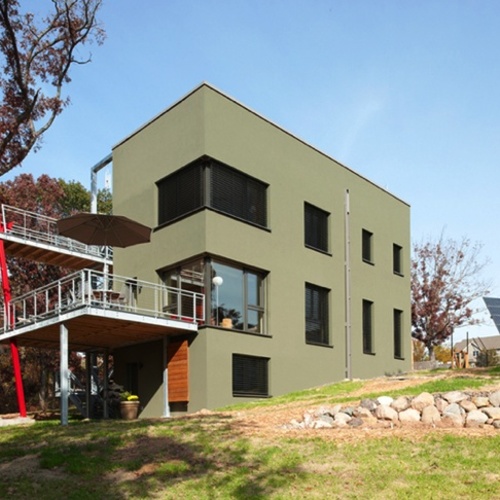
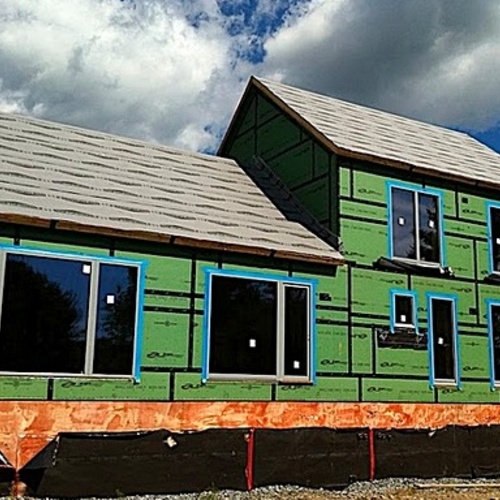
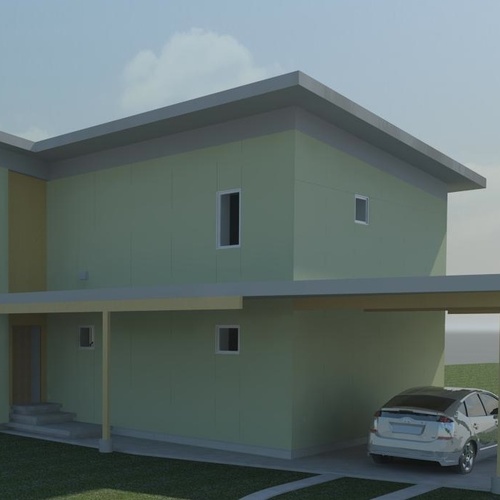






2 Comments
comment and clarification
We predict that the renewable energy systems will produce about 75% of the homes annual "energy", not annual "electricity", based on two occupants.
Also, regarding square foot cost. People need to realize that quoted square foot costs can vary widely depending on what is included and how the area is calculated. For instance the difference between total gross and net square footage in a Passive House can be up to 15%, and often things like design fees and renewable energy systems may be left out of cost figures.
Thank you, Dave
The clarifications on both energy use and cost calculations are much appreciated.
Log in or create an account to post a comment.
Sign up Log in